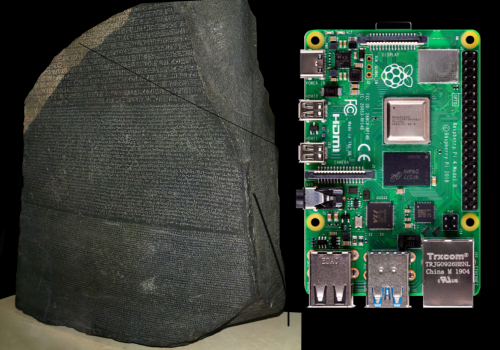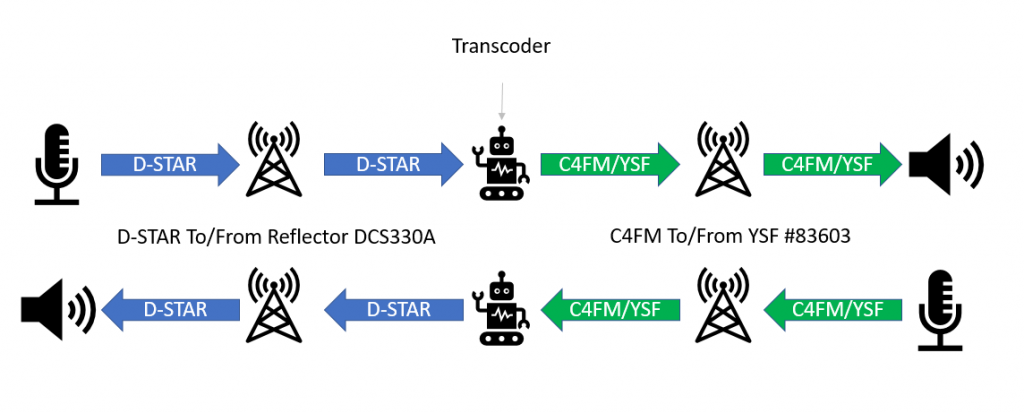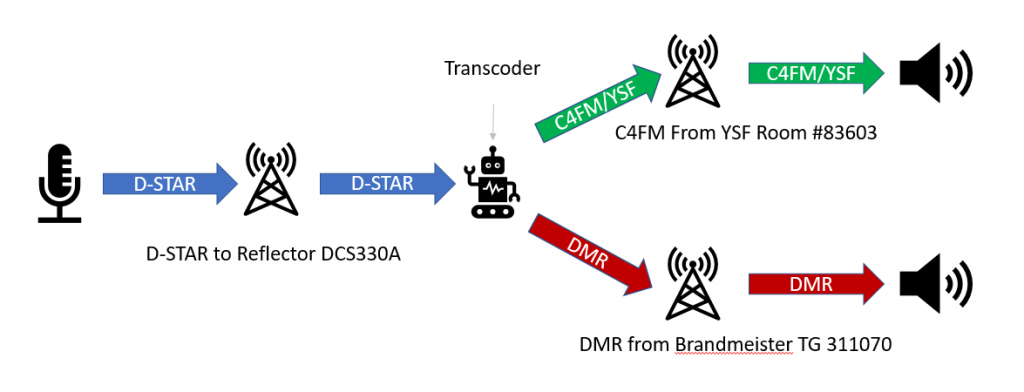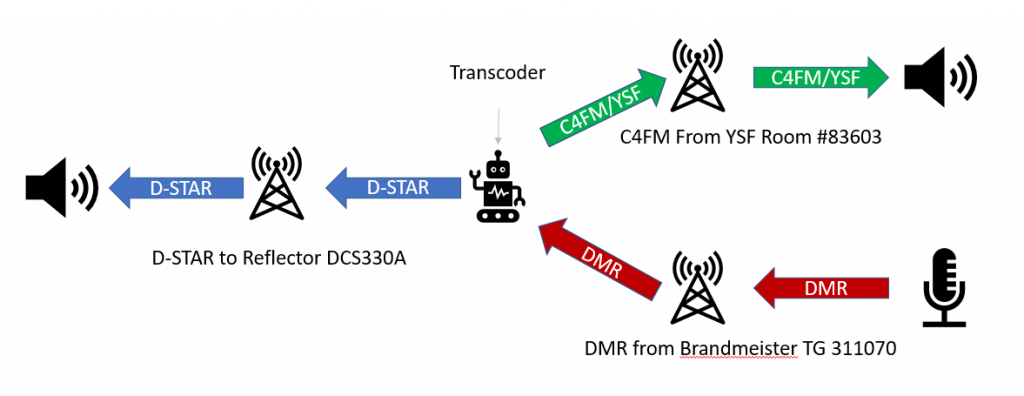Introduction
With the addition of a transcoding feature of Megalink’s XLX330 Reflector, it’s important to understand what this feature does and why it’s interesting and exciting to the users. This article will explain what transcoding is and how to use it.

Basics of Digital Voice
Unlike analog voice (FM, SSB, AM), digital voice is not transmitted as an RF wave that represents a sound wave directly. Digital voice is converted from the sound wave into a digital code, transmitted, and then converted back into an sound wave. This allows for additional features such as detecting and fixing errors to prevent audio loss, and passing other information along with the sound such as a callsign.
Coding is the process of turning the sound wave into the digital data, and decoding is converting it back. Think of it exactly how CW is used as “data” to transmit letters. The letters are coded to Morse Code on one end, sent, and then decoded on the other end. For digital voice, this process is done by a special, small computer program called a “codec”. The word codec portmanteau of “coder-decoder”. Codecs for radios, phones, and other smaller devices are often implemented on microchips. A codec specifically designed to coding and decoding human speech is called a “vocoder” (for “voice coder”).

The three main types of digital voice used in amateur radio are D-STAR, DMR, and YSF/C4FM. Each technology, while doing digital voice, is incompatible with each other in their native state. D-STAR, developed in the 1990s, uses a vocoder called AMBE developed by DVSI. DMR, developed next in the mid-2000s, uses a later technology from DVSI called AMBE+2. Finally, YSF developed after DMR, also uses the AMBE+2 vocoder. Each digital radios h a vocoder microchip built in to handle the coding and decoding of voice.
While DMR and YSF use the same audio vocoder, their digital signals are very different and are not mutually intelligible. D-STAR, DMR, and YSF are all obviously not just sounds. There is also data signalling of callsigns, reflectors, data loss protection, and more – and all three are different.
Lack of Interoperability
The lack of interoperability between these standards (and the expense of the repeater systems to support them in the case of D-STAR and DMR) has caused none of these technologies to become widespread. There was a period of time where D-STAR started to gain traction. Then YSF came along and had a spurt of interest. Finally inexpensive LMR radios started to appear causing interest in DMR. Hams started to home-brew solutions to the expense problem of repeaters resulting in technologies such as MMDVM and Pi-STAR (and many other components that go into those). These technologies made getting on the air with the various digital voice modes much cheaper, either through grafting a new controller onto an existing radio or through the use of “hotspots” which are just really small simplex radios. For the purposes of this article, all hotspots should be considered repeaters. So the entry barrier for the average ham to effectively use one or more of these radios and modes became much much lower.
The last step needed was to make interoperability happen between the modes. While there are several ongoing implementations of this, XLXD has become the technology leader in this space through the use of its transcoding features.
So What is Transcoding?
Transcoding is the ability to convert between the various types of voice codecs and their digital transmissions – and transcoding has to deal with both the audio and the signalling. Converting the digital signalling for the protocol is fairly straightforward for a programmer. However converting the audio requires both hardware and software to work together well and in near-real-time to make communications successful.
Fully transcoding between modes must be done by a reflector system that can move communications seamlessly between modes in real-time. They have to deal with the different signalling concepts (modules, rooms, talkgroups) and the audio (AMBE or AMBE+2). Transcoding reflectors must be able to support hardware that can be used to convert the voice traffic between those two vocoder protocols.
As an example, consider a communication between one D-STAR radio and one YSF radio. The D-STAR user keys up to their repeater on a reflector (e.g. DCS330A). The repeater sends the communication to the reflector. A second user, with a YSF radio, is also connected to a repeater through a YSF Gateway room that is connected to the same reflector (e.g. #83603). The reflector system transcodes the D-STAR transmission to YSF so the audio comes out of the YSF client’s repeater. The YSF user responds and the reverse happens – audio comes out the D-STAR repeater. Here’s a visual representation of what happens.

Adding in DMR just adds one more stream. An example of a D-STAR user transmitting and YSF and DMR receiving:

And here’s the DMR user responding back to the D-STAR user:

Enter the XLX Multiprotocol Reflector
XLXD has a complete transcoding implementation that can deal with both the data signalling and audio of D-STAR, YSF, and DMR. D-STAR reflectors are the most mature system in amateur radio and the technologies are stable and well-established. XLXD added on the WIRES-X protocol functions for YSF, which can be used both as a full-fledged WIRES-X room server or as a “YSF Gateway”. Finally XLXD has added interoperability for DMR, being able to map its modules to DMR IDs on a DMR C-Bridge (e.g. Brandmeister, DMR-MARC, etc.).
A complete transcoding reflector will support D-STAR modules, YSF Rooms (i.e. YSF gateway-type rooms, not WIRES-X nodes), and DMR talkgroups that can all talk to each other.
XLX330 – The Megalink Reflector
Local to the greater-Akron area, XLX330 is offered as a tri-mode multiprotocol reflector. For more information:
